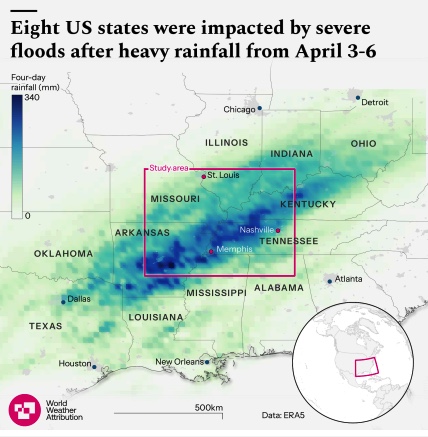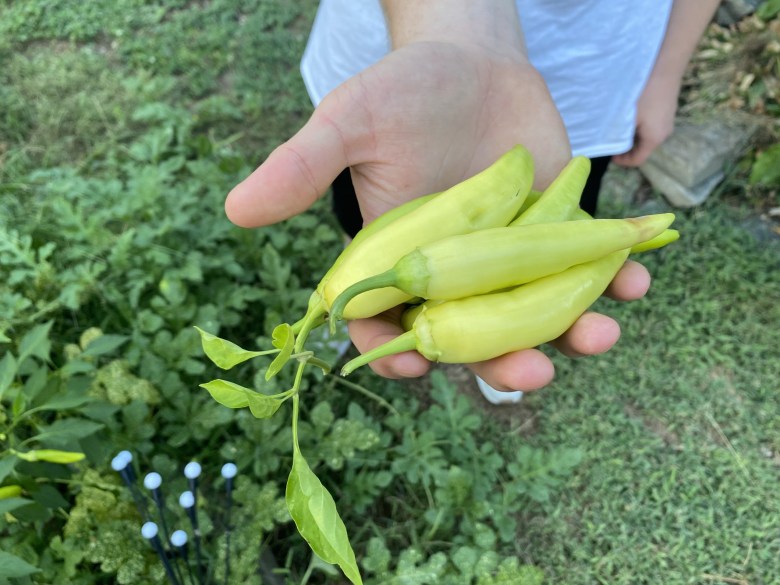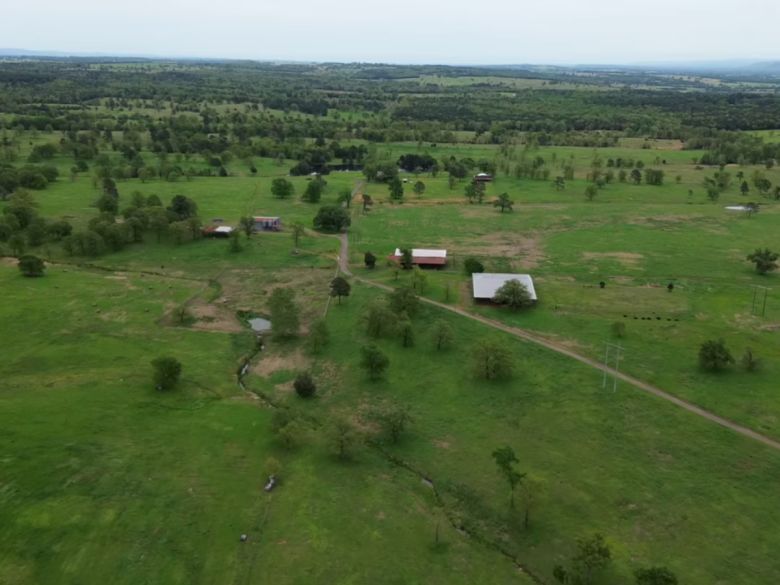As national attention remains focused on the terrible flooding that killed hundreds in Texas Hill Country, people are asking plenty of questions about the role of emergency response and climate change in the disaster. A climate scientist at Texas Tech University named Katharine Hayhoe
described the flooding in Time Magazine
as a “worst-case scenario” as 1.8 trillion gallons of rain pummeled the Guadalupe River area in the middle of the night.
While she acknowledged that the Hill Country is no stranger to flash floods, she wrote that as the world warms, warmer air holds more moisture which increases capacity for more rain during a storm than 50 or 100 years ago. “Climate change isn’t creating new risks: rather, it’s
amplifying
existing ones,” Hayhoe writes.
The Arkansas Delta is no stranger to flooding, either. Most recently, between April 2 and April 6, the state saw major flooding down the Cache, Black, White and Ouachita rivers that covered over 260,000 acres of crops and produced around $78.9 million in crop damage, according to the preliminary estimate by the University of Arkansas Division of Agriculture.
Lonoke County farmer
Harrison Jones
, a member of the Isbell family that has been farming near England for decades, told the
Arkansas Times
that the family lost around 600 acres in planted rice.
And the fields stayed wet after the initial flooding. The
National Weather Service reported
that April 2025 in Arkansas was marked by “severe storms, record-breaking rainfall, and deadly flooding.” Central Arkansas, Northwest Arkansas and much of the Delta including Lonoke County received between 10 and 12.5 inches of rain — double the normal amount.
According to Jones, another 1,500 acres of rice planting was delayed by the ongoing deluge, creating one of “the biggest total acreage losses we’ve ever had.” May also remained wetter than normal, with more floods and severe storms and many Delta counties seeing upwards of 7 inches of rain when those same areas would typically get around 5 inches. The Isbell family decided not to plant those 1,500 acres, and they’ll know their total losses from the season after the harvest this fall.
Lonoke, Lawrence, Clay, Jackson, Cross and White counties all had around half of their planted acres of crops flooded and destroyed.
The damage from the April flooding is only exceeded in recent memory by the spring 2019 flooding, which caused over $1 billion in damage,
according to the National Oceanic and Atmospheric Administration.
And according to
a timely report by climate scientists
, the devastating flooding for Arkansas agriculture was more intense and more likely to happen due to global climate change.
The floods, which hit much of the South and Midwest in April, were studied by World Weather Attribution, an organization that works with climate scientists around the world to study and release rapid information on the impacts of climate change on natural disasters. The researchers analyzed weather data and climate models to compare how the flooding in April was different in a world that is 1.3 degrees celsius hotter than the pre-industrial climate.
The organization concluded that climate change made the rainfall about 9% more intense, and that the four days of rainfall between April 3 and April 6 was the heaviest rain ever recorded in the region, with historical data suggesting that type of downpour should only occur once a century on average. They estimated the once-in-a-century flood was made 1.4 times as likely to happen by heightened global temperatures.
Finally, the authors of the study — including scientists from the United Kingdom, Netherlands, United States, South Africa, France and other countries — concluded that if global warming reaches 2.6 degrees celsius, four day rainspells will become 7% more intense and twice as likely. They noted the world is on track for a warming of 2.6 degrees celsius by 2100, based on current fossil fuel usage.
Just like Texas Hill Country, the Arkansas Delta will likely see its proclivity to flood only amplified in coming years by our warming climate. Individuals cannot stop a changing climate alone. But as Hayhoe notes at the end of her article in Time, individuals can use their voices to advocate for the emergency warning systems, renewable energy sources and climate resilience investments needed to weather the oncoming storms.
On My Radar:
I’m closely watching the anti-wind energy developments in Arkansas. Washington County, the third largest county in Arkansas, may take up a wind and solar energy moratorium in the coming months, even while our state is on the cusp of an energy demand crisis. Shoot me a message if you know anything or want to talk!
Also,
The New York Times did a great article
about how President Trump and Missouri Senator Josh Hawley are trying to get a major electricity transmission project killed that would help supply more of the country with wind energy from Kansas. The project doesn’t necessarily impact Arkansas, but it’s a story that illuminates a lot of information about how Trump is operating in regard to clean energy projects.
It’s dragon-slaying time!
In a time when critical voices are increasingly silenced, the
Arkansas Times
stands as a beacon of truth, tirelessly defending the fundamental rights and freedoms within our community. With Arkansas at the epicenter of a sweeping culture war affecting our libraries, schools, and public discourse, our mission to deliver unflinching journalism has never been more vital. We’re here to “slay dragons” and hold power accountable, but we can’t do it alone. By contributing today, you ensure that independent journalism not only survives but thrives in Arkansas. Together, we can make a difference — join the fight.







